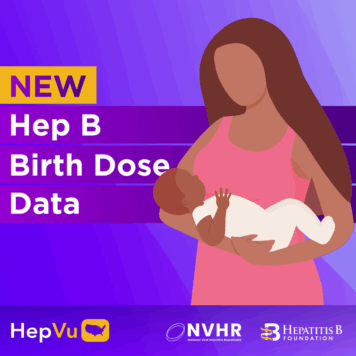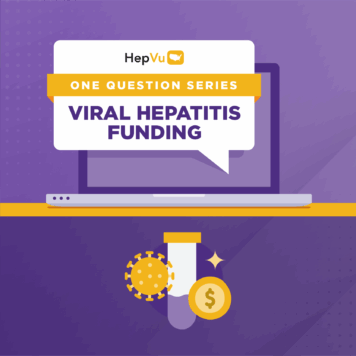Selected and summarized by Ronald O. Valdiserri, MD, MPH, Professor, Department of Epidemiology, Rollins School of Public Health, Emory University, and Co-Chair of HepVu.
Dr. Valdiserri reviews significant articles on prevention, public health, and policy advances in viral hepatitis. This month, he highlights “National Perinatal Hepatitis B Prevention Program: 2009-2017,” authored by Koneru A, Fenlon N, Schillie S, et al. Published in Pediatrics, March 2021,
What question(s) does this study address?
Pregnant women with Hepatitis B virus (HBV) infection can transmit the virus to their newborns. Up to 40% of infants born to women who are positive for Hepatitis B surface antigens (HBsAg) can become infected with Hepatitis B; if pregnant women are positive for both HBsAg and Hepatitis B e antigen (HBeAg), up to 90% of their newborns can be infected with Hepatitis B. Among those newborns who become infected with Hepatitis B, 90% will go on to develop chronic Hepatitis B infections with a 25% lifetime risk of premature death from cirrhosis or liver cancer.
Fortunately, mother-to-child transmission of Hepatitis B is highly preventable by administering post-exposure prophylaxis (Hepatitis B immune globulin and Hepatitis B vaccine) to the newborn shortly after birth, followed by completion of the Hepatitis B vaccine series within six months. The Advisory Committee on Immunization Practices (ACIP) also recommends testing infants one to two months after the final dose of the Hepatitis B vaccine to confirm immunity; this is known as postvaccination serologic testing (PVST).
This research analyzes data from 2009 to 2017 to assess trends and outcomes among infants born to HBsAg-positive mothers case-managed by the Centers for Disease Control and Prevention (CDC)’s national Perinatal Hepatitis B Prevention Program (PHBPP). This national program began in 1990 and funds all states, the District of Columbia (DC), and several local health departments to identify pregnant women who are infected with Hepatitis B and case- manage their infants to prevent mother-to-child transmission of Hepatitis B.
What are the major findings of this report/article?
- Data from 50 states, DC, and five large metropolitan health departments identified 103,825 infants born to HBsAg-positive women during the study period, 2009 to 2017.
- Using data from the National Center for Health Statistics, the CDC developed national estimates of the number of births to Hepatitis B-infected women for each year of the analysis. Using these annual estimates as denominators, the proportion of infants identified annually by the PHBPP increased overall from 48.1% in 2009 to 52.6% in 2017.
- Nearly 97% (n=100,372) of the identified infants were case-managed by PHBPP.
- During the study period, the proportion of case-managed infants receiving post-exposure prophylaxis, at least 3 Hepatitis B vaccine doses, and postvaccination serologic testing increased overall from 94.7% to 97%, 83.1% to 84.7%, and 58.8% to 66.8%, respectively.
What are the implications for the prevention and control of viral hepatitis?
- The PHBPP has been largely successful in preventing mother-to-child transmission of Hepatitis B among those infants that the program has been able to identify.
- Although an estimated 95% of pregnant women in the U.S. are tested for Hepatitis B surface antigen (HBsAg), less than half of the expected births are identified by the national PHBPP—indicating that not all HBsAg-positive pregnant women are reported to the health department.
- Strategies are needed to close the gap between the number of infants identified by the program and the estimated number of infants born to mothers with Hepatitis B infection. One way to do this is to improve the identification of HBsAg-positive women who are pregnant. This can be accomplished if all laboratories reporting HBsAg results to health departments also include pregnancy status on the reports they forward to health departments.




